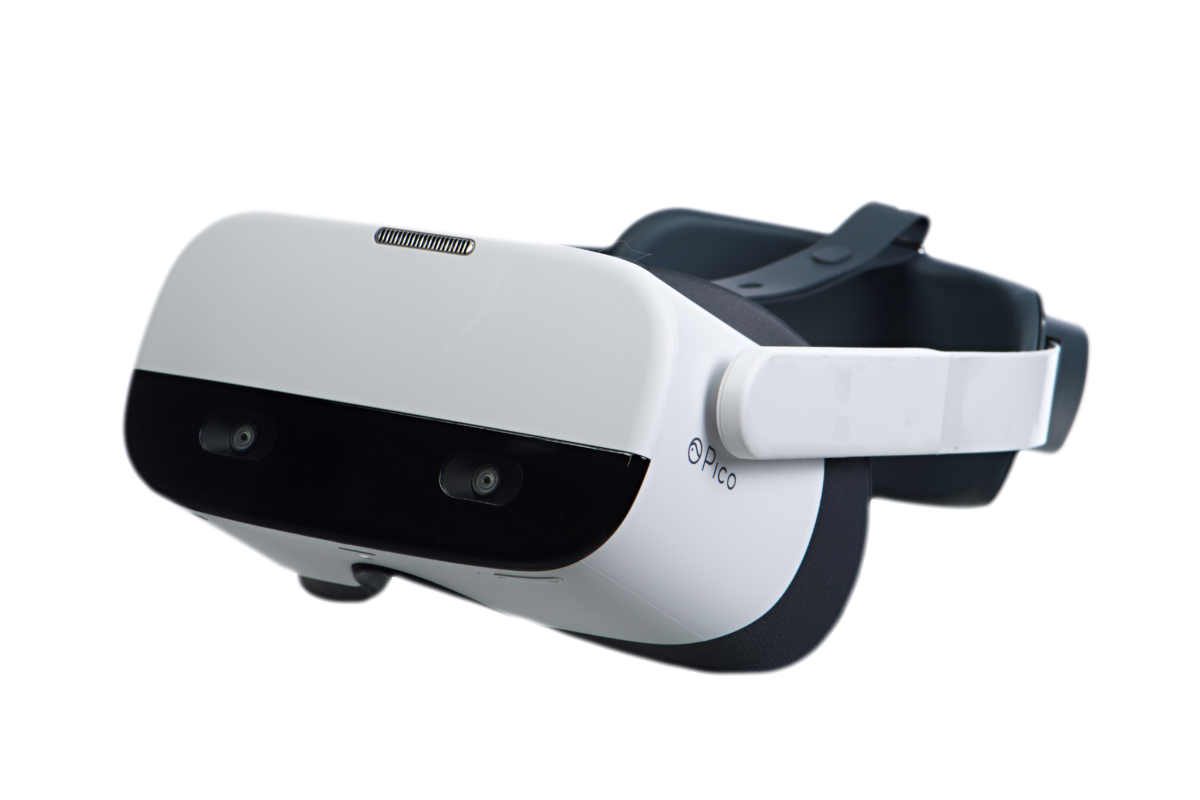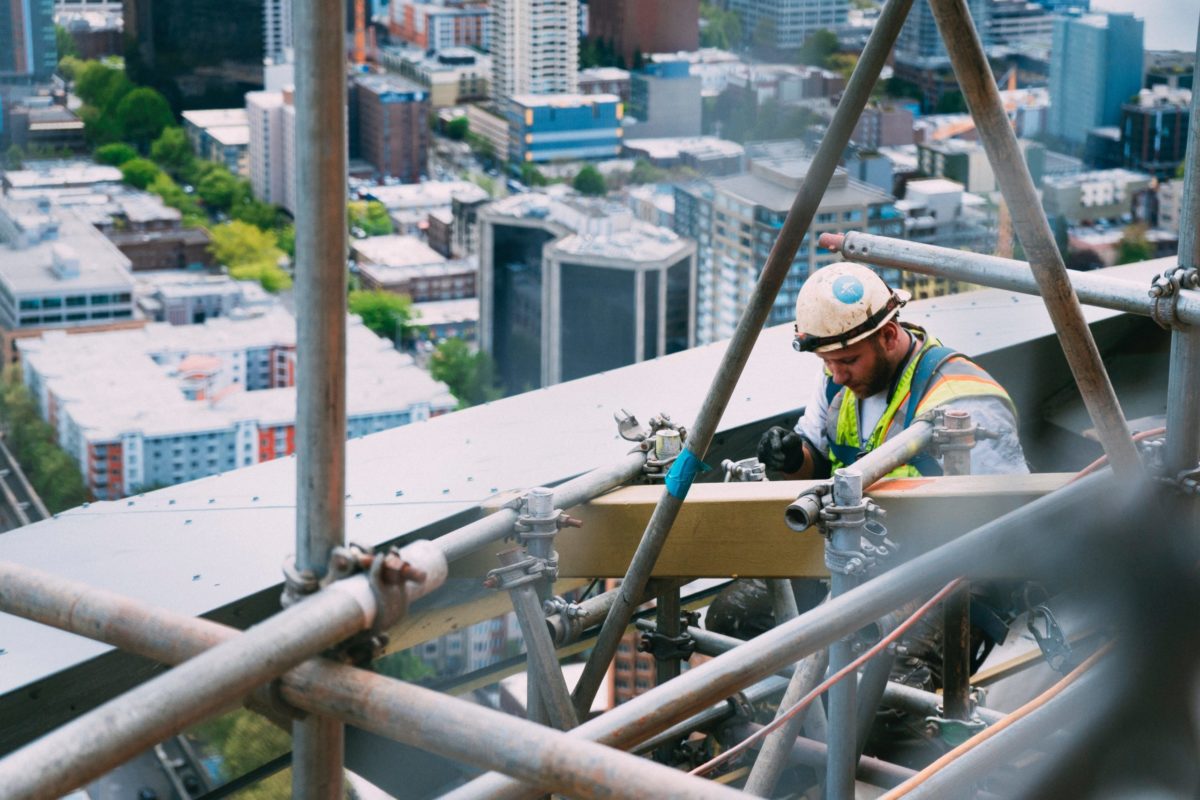Two of the biggest challenges in construction training are safety and technology. Both tend to work against each other. As we introduce technology to make construction projects safer and more productive, these same technologies can add to both confusion and mistakes with the inevitable learning curve. Meanwhile, new safety procedures and even the difficulty of the training itself can limit the innovations we bring to the construction site.
Using virtual reality for construction training can help solve these challenges by providing both veteran and new employees an effective learning platform that better prepares them for new safety and technology initiatives — as well as providing employers with unprecedented visibility into their capabilities.
Why Construction Training Needs Virtual Reality
If you’re in the construction business, you’ve probably heard the following statistics before, but these haunting numbers should, and indeed, must stay top-of-mind if you’re seeking to improve training outcomes:
- 42% of all construction deaths involve falls
- 23% of those killed didn’t use a fall arrest system
- 20% of construction deaths occur within the first two months on the job
These stats, specific to construction falls, (the leading killer among the so-called “Fatal Four” construction site accidents — falls, electrocution, caught-in/between, and struck-by-object), is just one example that illustrates why better construction training solutions are desperately needed. Each of these statistics point to a lack of appropriate training, as well as the imperative for more effective and realistic methods.
One of the biggest challenges is finding a way to create a safe, realistic, and cost-effective training environment. The most common practice is to put new workers (who frequently are trained and certified on their own time), onsite for on-the-job training — and hope for the best.
On-the-job training can be effective in a narrow way — people often learn best by doing something. However, by itself, on-the-job, (or “OTJ”) training is clearly insufficient based on the hundreds of preventable fall-related and other kinds of deaths that occur each year. Not only is OTJ training insufficient, it often introduces all kinds of additional safety, productivity, cost, and liability issues.
In contrast to the real-world, virtual reality can give you that on-the-job training experience — without the risks.
Benefits of Construction Training in Virtual Reality
There are several benefits to VR training that are probably pretty intuitive to the construction domain — things like improving the safety of instruction, creating more realistic and job site-specific environments, and allowing for unlimited practice at no additional cost.
However, just like VR training itself, many of its additional benefits are better explained through a real-world illustration.
Let’s walk through one of PIXO VR’s latest construction training modules, Fall Protection, to demonstrate the advantages of virtual reality.
Quick Start Training
With limited space, computing power, and some special, cost-effective VR hardware, you can start training new workers right away. Just get an Oculus Quest standalone VR headset, pre-loaded with PIXO VR software, and find a ten-by-ten corner of a room or job trailer and, just like that, you’re ready to walk into a realistic job-site.
Go ahead, look down — experience the height, obstacles, and other factors, (including a ticking clock) that will be part of your work environment on a simulated “real-world” construction site.
Inspect Your Equipment
In our fall protection VR training module, trainees will choose and assess the condition of their fall arrest gear. During this process, trainees are presented various fall arrest harnesses and lanyards — some perfectly work-ready, and some featuring randomized defects of varying degrees, (some defects being easy to spot, other being much more subtle but no less dangerous).
Trainees quickly learn that it is unwise to assume your gear is sound. They will also learn the importance of following safety protocols and inspecting their equipment thoroughly — because their virtual (and later, actual) life will depend on it.
Now, it’s time to travel to the job site, 40 stories above street-level. Once there, trainees are expected to tie-off their lifelines quickly and properly, then complete a basic task — but should they make a mistake, they’ll just as quickly learn nothing is “basic” when working at heights.
Practice Proper Procedures
At 40 stories in the air, it’s critical that every step and action you take is carefully considered. Your actions or inactions will impact your safety, the safety of your co-workers, and even citizens going about their daily lives in and around the job site.
Trainees are expected to tie-off their lifeline to the correct anchor locations, safely secure their tools, and attempt to complete their work tasks — but remember, mistakes at 400 feet can have a severe impact. Literally.
Experience Consequences
Probably the most significant benefit to VR training for any hazardous workplace is that, based on a trainee’s decisions, they can experience first-hand the most dire of consequences, just as they would in reality. No real-world practice can allow trainees to make these kinds of critical, life-threatening mistakes without suffering the fatal consequences.
The pulse-pounding feeling of free-falling to your doom after incorrectly choosing a harness or improperly tying-off is an experience not easily replicated — or forgotten. That kind of experiential lesson stays with a person, which is of critical importance when a trainee is eventually called upon to do “the real thing”.
Construction Training Best Suited for VR Training
While most construction training is well-suited for incorporation into a virtual reality training assessment, several areas make particularly good starting points.
Safety Procedures and Hazard Avoidance
One of the most popular places to start with VR training is basic safety. This is an area that never gets enough hands-on training, and when read in a binder or viewed on a PowerPoint presentation, can fail to convey its seriousness to a trainee, (or more seasoned workers, for that matter).
Using a virtual reality training environment, you can put trainees in a variety of perilous predicaments with absolute safety. You can test their mastery of safety protocols as well as their ability to make decisions that directly impact their safety and the safety of the site under potentially stressful conditions.
Select Tools and Equipment Use and Handling
Another common starting point is training new workers on the proper operation of tools and equipment. Every construction job site is slightly different. Most projects have special tools and equipment that might be unfamiliar to new workers.
VR training can allow trainees to get their hands on these new tools and equipment, in the safety of a simulated environment, to quickly improve their familiarity and competency.
Materials Identification and Handling
Construction sites are loaded with a variety of materials, some of which are hazardous and many of which require special handling. But just like tools and equipment, these materials tend to be specific to particular job sites.
This situation can put untrained workers at serious risk. However, by placing these materials into a virtual reality training environment, workers can test their ability to identify and properly handle these particular materials before they encounter them on a busy job site.
Working Under Extreme Conditions
Construction workers have to get comfortable working from extreme elevations, unsteady structures, and in confined or crowded spaces. Furthermore, they still have to perform complex and dangerous tasks flawlessly. Training workers in these extremes and testing their performance is often impossible because of cost or safety.
Again, VR training can be the ideal solution. Virtual reality allows workers to experience the exact, sometimes mentally challenging conditions they’ll face in the real world.
PIXO VR Can Make Your Construction Training Better
We’re already helping the construction industry overcome workforce training challenges with our VR training experiences. As the industry grapples with the increasingly tightening job market and the resulting skilled labor shortage, more and more companies are realizing that VR can help close the skills gap better and faster than other available training methods.
What’s more, the younger generation and even veteran workers appreciate a more engaging and innovative training environment. The very willingness of management to invest in state-of-art training can become a recruiting and retention edge.
With in-depth data tracking and reporting tools, VR training can ensure you have the very best workers on the job, improving performance and safety on all your projects, and reducing costly, budget-busting errors.
Virtual reality construction training is also becoming an essential solution as standards and regulations become more stringent, making training more difficult, time-consuming, and expensive.
PIXO VR and our training solutions can help you do more training, in less time, and at a lower cost. More training, by definition, should by itself lower the risks of mistakes, blown deadlines, on-site injuries, OSHA fines, and damaging litigation — but more and better training can help improve an entire company’s safety culture.
We’re building new realities, every day

PIXO Has Improved VR Management to One Easy Step

Further Reading:
10 Benefits to Virtual Reality Construction Safety Training
Virtual Reality for Fall Protection Training
